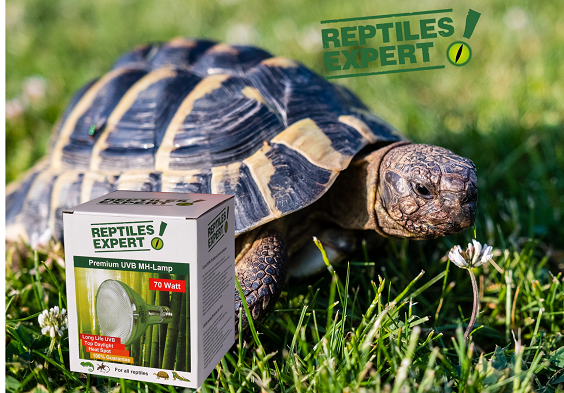We use cookies to make your experience better. To comply with the new e-Privacy directive, we need to ask for your consent to set the cookies. Learn more.
Greek tortoise - the right terrarium lighting

Lighting guide for Greek tortoises
Our Greek tortoises are also cold-blooded reptiles and therefore need a lot of
- UV light
- bright visible light
- warmth
In their natural habitat - in the Mediterranean area - the solar radiation is much more intense than here in Central Europe. Especially north of the Alps, the solar radiation is far too low, even in summer. Due to the flatter angle of incidence, the sun's light has to take a longer path through the atmosphere - which therefore acts like an enlarged filter. Heat and UV radiation is therefore lost. While an average solar radiation of 200 watts per m² is reached in the Mediterranean region, the maximum in Central Europe is 110 watts / m². Compared to the Mediterranean region, summer here is simply too short, too humid and too cold. However, a sufficiently high temperature and UV radiation is essential for the survival of tortoises.
Due to low temperatures and wet and cold environment, these reptiles do not reach the necessary body temperatures, so they cannot digest the food and are extremely susceptible to diseases (especially liver damage). The important UVB radiation for vitamin D3 production is of course also much lower in our latitudes.
Therefore, in our latitudes, we recommend an artificial sunbathing area with reasonable UV lighting. A 35 watt UV metal halid lamp at a distance of approx. 30 cm is sufficient for small animals. If you want a larger distance for several animals or adults, it is advisable to go to 50 watts up to 40 cm or 70 watts up to 50 cm in height. The entire body of the turtle should be covered by the light cone, since vitamin D3 synthesis can only take place in the skin layers of the extremities and the head and not on the . It is always advisable to leave a shady area in the terrarium so that the animals can withdraw and hide.





